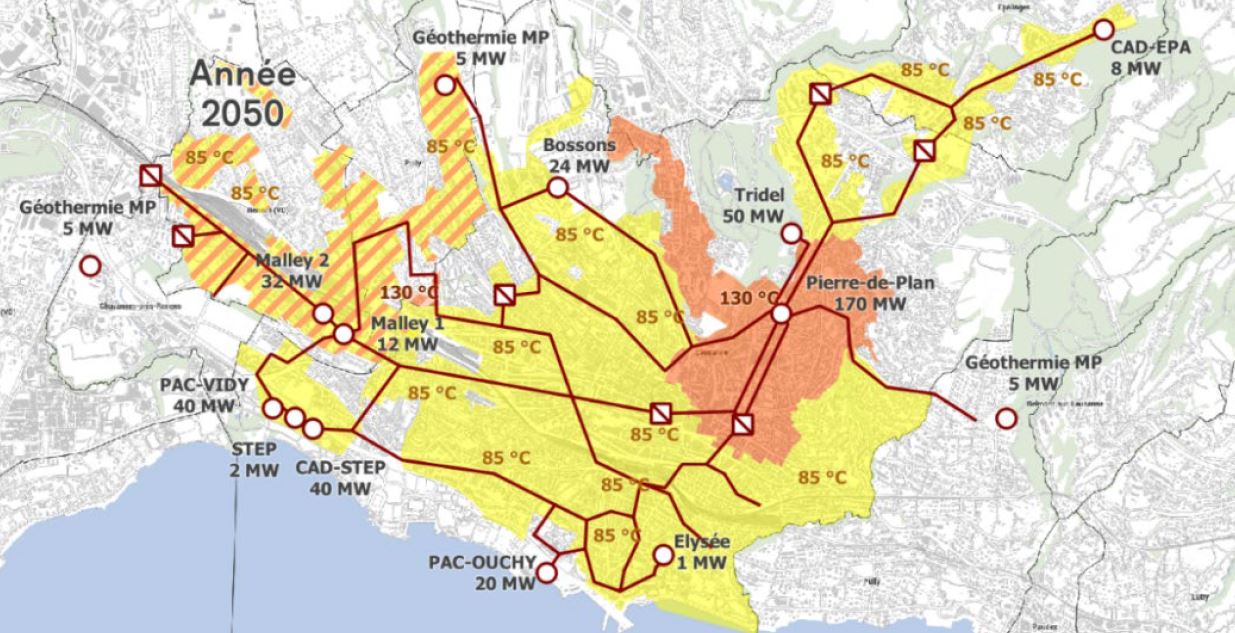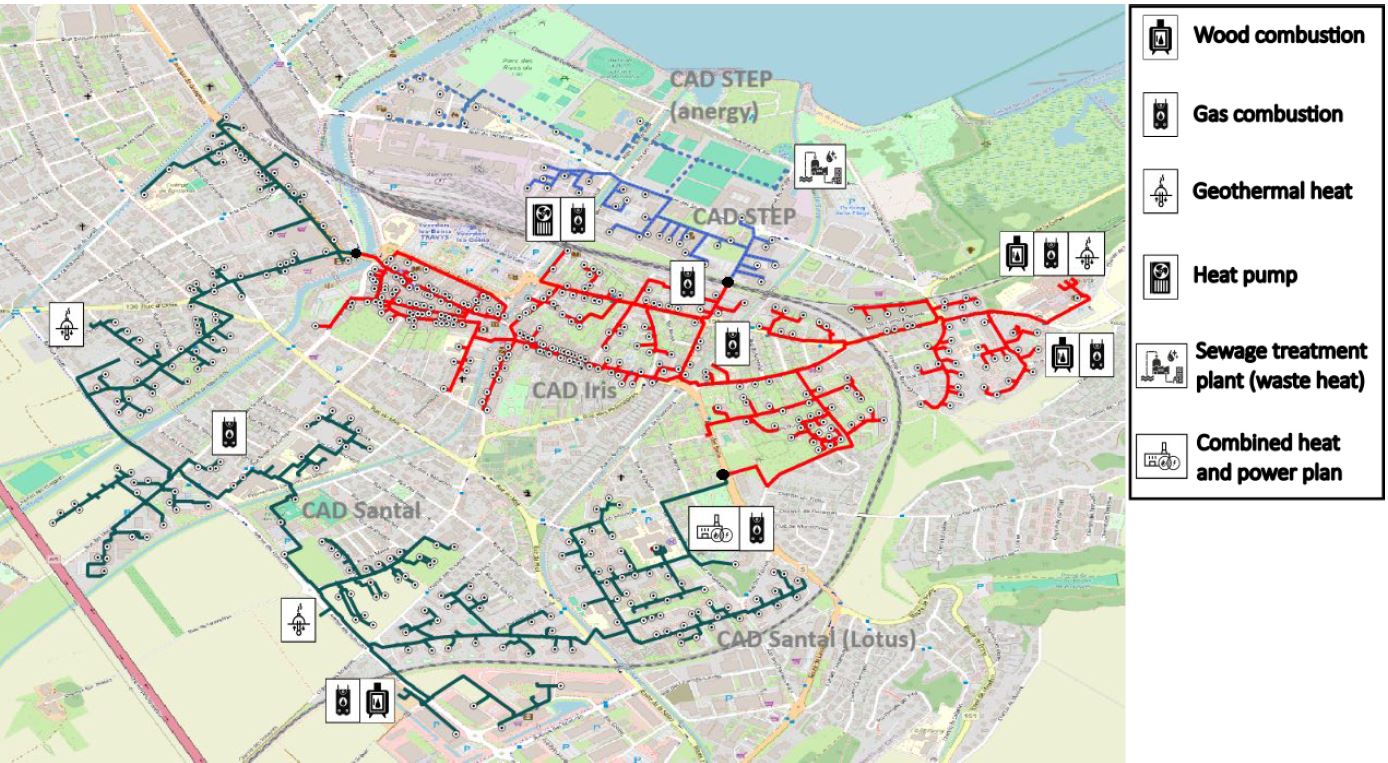The FOSTER_DHN project aimed at developing multi-grid and multi-temperatures design and simulation approaches to gain a systemic understanding of district heating network (DHN) deployment and provide decision-support for local authorities and utilities. A simulation tool was developed dedicated to DHN. This tool can be used to plan district heating networks integrating more low-carbon energies, lowering temperature levels and identifying synergies. The FOSTER_DHN tool is thus an ideal platform for involving the various players in a region in energy planning.
The results from WP7 (Case Studies Romandie: Strategies and Potentials of Temperature Reduction in Existing District Heating Networks) of the DecarbCH project were also useful for the realization of the FOSTER_DHN project.
Project partners:
- Institut d’Energie et de Systèmes Electriques (IESE), Haute Ecole d’Ingénierie et de Gestion du Canton de Vaud (HEIG-VD), Yverdon-les-Bains (VD)
- Institut Energie et Environnement, HES-SO Valais-Wallis, Sion (VS)
Implementation partners:
- Yverdon Energies (SEY)
- Services Industriels de Lausanne (SIL)
Contacts:
-
Massimiliano Capezzali, massimiliano.capezzali@heig-vd.ch
-
Marten Fesefeldt, marten.fesefeldt@heig-vd.ch
Key results:
-
Advanced Simulation Environment: A versatile simulation tool was developed to model district heating networks (DHNs) of varying sizes, topologies, and temperature levels. It enables assessment of physical feasibility and calculation of key performance indicators (KPIs) such as renewable energy share and CO₂ emissions.
-
Decarbonization Potential in Yverdon-les-Bains: DHNs in Yverdon-les-Bains could cut greenhouse gas emissions by several tens of percent and achieve up to 80% renewable energy supply using sources like geothermal and wood. Lowering distribution temperatures from 80 °C to 70 °C significantly reduces emissions and heat losses, although policy limits on wood use must be considered.
-
Synergies Between DHNs: A methodology was developed to identify synergies between DHNs (e.g., Yverdon-les-Bains and Neuchâtel), which can improve renewable energy integration and reduce system overdimensioning. While precise CAPEX savings were not quantified, results indicate efficiency gains through smart interconnections.
-
Micro-DHN with Data Center Waste Heat (Lausanne): A simulation of a micro-DHN using data center waste heat showed that lowering temperatures reduces heat losses but increases electricity use due to lower heat pump efficiency. Scenarios showed trade-offs between energy savings and heat supply reliability.
-
Integration of Waste Heat into Lausanne DHN: Waste heat from Swisscom’s data center, when integrated into the existing Lausanne DHN, improved system sustainability boosting renewable energy use by 1.5% and cutting natural gas use by 9.3%. The Southwest Lausanne subnetwork saw even greater benefits.
-
Temperature Optimization in Dufour Micro-DHN: Lowering distribution temperatures improved efficiency (e.g., 21% lower electricity use by the central heat pump) and reduced heat losses, but also led to heat supply shortages and higher pumping energy due to increased flow needs. Results underline the need to balance temperature reduction with system performance.
Overall Insight:
The project demonstrates that smart design, temperature management, and interconnection of DHNs, alongside integration of waste heat, can significantly enhance decarbonization, efficiency, and renewable energy uptake, though operational trade-offs must be carefully managed.
Further reading:

